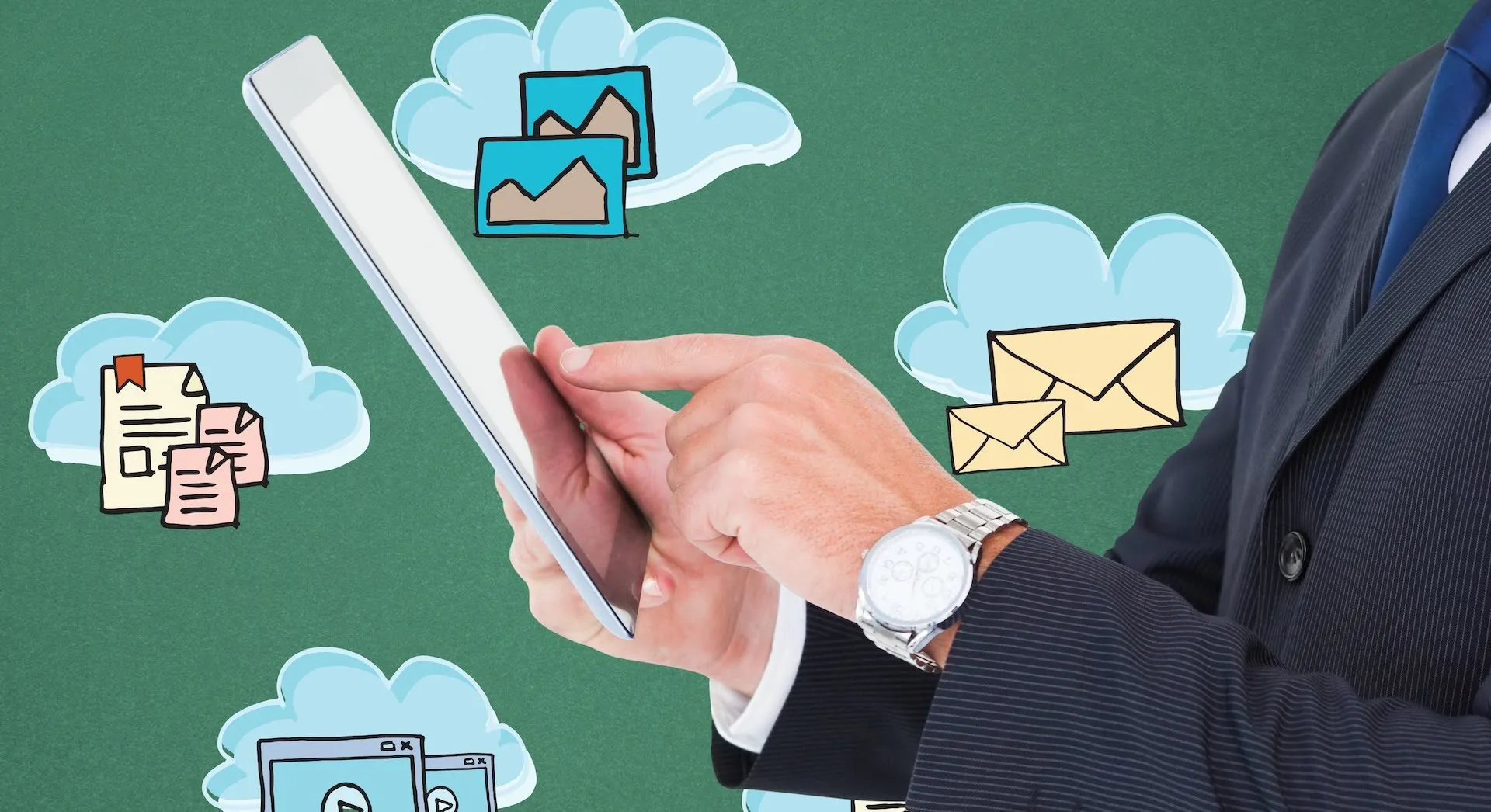Why Omnichannel Lead Generation Works
Integrating multiple channels into a cohesive strategy is key to boosting lead generation and engagement. Omnichannel marketing ensures a seamless, connected experience across every touchpoint, from awareness to conversion.
By aligning messaging and content delivery, you can better engage prospects, nurture relationships, and accelerate growth.
Learn how an omnichannel marketing strategy can transform your lead generation efforts and why it’s become an essential driver of modern B2B marketing.
Omnichannel Meaning Explained – Why It’s Essential for B2B Success
To stay competitive, you need more than multichannel marketing; you need omnichannel marketing.
Omni is Latin for ‘all’. Omnichannel simply means that you use all of your channels that blend into one cohesive experience. For example, using an omnichannel retail strategy means using your social media, in-store service, online retail platform, and advertising to attract prospects through the various stages of your sales funnel.
This approach connects multiple platforms into a unified, personalized experience for prospects. Unlike multi-channel strategies, which treat platforms separately, omnichannel connects everything – from social media to email.
By delivering consistent messaging and meeting customers where they are, you build stronger relationships and drive better results.
What is Omnichannel Lead Generation?
Omnichannel lead generation is the process of using various channels to reach out to potential prospects and draw them in. For example, we find potential prospects using intent data based on our client company’s target customer profile. After that, we send cold emails offering their products/services and follow up with cold calls. Our fractional sales executives then engage our client’s prospects on platforms like LinkedIn to provide a seamless transition of mediums within the sales funnel. The most important element of our omni-channel campaigns is human interaction because qualified leads need to feel they are being taken seriously. Our sales reps have an average of 3 to 5 years of experience, guaranteeing quality service for your team. They seamlessly become part of your team to increase our understanding of your company’s specifics. We use omnichannel campaigns that have up to 12 touchpoints with every prospect to maximize prospect engagement and retention.
Omnichannel vs Multichannel – Key Differences Explained
While both strategies use multiple platforms to connect with prospects, omnichannel and multichannel lead generation differ fundamentally in approach.
The key distinction between omnichannel and multichannel lead generation lies in how they prioritize the prospect’s experience:
- Prospect-Centered vs Company-Centered
- Multichannel focuses on broadcasting a message through multiple platforms to maximize exposure.
- Omnichannel adapts interactions to the individual prospect, ensuring personalized and seamless engagement.
- Integration vs Isolation
- Omnichannel integrates channels like email, LinkedIn, and calls into a unified strategy.
- Multichannel often operates each platform independently.
- Engagement Dynamics
- Omnichannel personalizes outreach (e.g., following up an email with a tailored call), fostering a natural, trust-building relationship.
- Multichannel strategies focus on reaching prospects through various platforms, often utilizing each channel separately to deliver the message.
An omnichannel campaign outperforms single-channel approaches because they directly engage specific prospects, achieving 250% higher conversion rates, according to Omnisend.
Additionally, using three or more channels boosts customer retention by 90%. This cohesive and personalized omnichannel strategy drives stronger engagement and satisfaction, making it a highly effective tool for lead generation and long-term customer loyalty.
Avoiding Common Omnichannel Lead Generation Mistakes
One critical mistake in omnichannel lead generation is targeting the wrong prospects. This often happens when businesses rush to acquire leads without a clear understanding of their ideal audience. The result? Low-quality leads, weak engagement, and wasted resources.
What’s the solution? Create a comprehensive Ideal Customer Profile (ICP).
- Research competitors and market trends to uncover new opportunities.
- Integrate psychographics and behavioral data to pinpoint your ideal audience’s preferences.
- Regularly update your ICP using analytics to stay aligned with shifting market dynamics.


“When executing an omnichannel lead generation strategy, your ICP should always be a work in progress. The more you interact with prospective customers, the better your understanding of them will be. So be sure to always test and update your customer profile with the new knowledge you gain.”
VP of Sales Operations,
Martal Group
How Do You Create an Omnichannel Strategy?
Building an effective omnichannel lead generation strategy requires understanding your target audience’s journey across touchpoints.
We’ve developed a comprehensive lead generation approach that ensures seamless interactions, delivering a cohesive experience that drives qualified leads.
Here are the key steps to developing your own omnichannel strategy:
- Identify Your Ideal Audience to Drive Engagement
Start by crafting detailed buyer personas to understand your audience’s preferences, behaviors, pain points, and goals. This ensures your campaigns are customized to engage the right audience with relevant messaging at the optimal time.
- Craft a Unified Brand Message Across All Platforms
Consistency is key in omnichannel communication. A consistent brand voice guarantees your value proposition is clearly communicated at every touchpoint.
Whether through social media, email, or blog content, your messaging should feel familiar and aligned, guiding prospects seamlessly through their journey.
- Create Engaging Educational Content to Nurture Leads
A successful omnichannel strategy delivers valuable, educational content that resonates with prospects at each stage of the buyer’s journey.
From blog articles and whitepapers to infographics and webinars, diverse content types engage prospects, build trust, and showcase your expertise.
We use our AI-driven sales engagement system to automate and personalize content delivery, ensuring every lead receives timely, relevant materials.
- Expand Your Reach by Diversifying Outreach Channels
Identify which channels your audience engages with most, whether through social media, email, paid ads, or webinars. We’ve found that a diversified approach is key to broadening your reach while catering to different preferences.
For example, a LinkedIn campaign can be complemented by nurturing prospects via email sequences. We also rely on cold calling in our omnichannel strategies as a way to significantly boost the number of qualified leads generated and meetings booked.
- Unify Your Channels for a Consistent Customer Experience
Integration is essential to an omnichannel strategy. By aligning all touchpoints, we ensure a consistent and interconnected experience across platforms.
Integrating marketing automation, CRM systems, and personalized messaging optimizes customer engagement across all touchpoints.
Whether you’re following up on emails or retargeting prospects on social media, maintaining a seamless journey ensures your message remains consistent and impactful.
- Monitor, Analyze, and Refine Your Strategy for Continuous Growth
As with any marketing campaign, performance tracking is essential. Monitor performance metrics such as impressions, engagement rates, and conversions to assess how each channel is performing.
At Martal, we use agentic AI to analyze and optimize campaign performance across touchpoints based on real-time market feedback.
By combining audience insights, integrated channels, personalized content, and advanced technology, you can create an omnichannel strategy that drives results.
Unlike cross-channel, which treats each platform separately, omnichannel unifies all touchpoints for a seamless experience.
Crafting a Cohesive Omnichannel Strategy for Long-Term Success
A well-crafted omnichannel strategy drives sustained engagement and generates high-quality leads. By integrating personalized content across multiple touchpoints and using advanced technology, businesses can offer a consistent experience at every stage of the customer journey.
We’ve proven that a strategic B2B omnichannel marketing approach, paired with AI-powered lead generation, accelerates growth, nurtures relationships, and helps companies scale faster.
With the right strategy, tools, and insights, you can transform your engagement and convert prospects into loyal customers.
FAQs: Omnichannel Lead Generation
What Is Omnichannel With Examples?
Let’s say that you’re a B2B software company looking to acquire more leads through omnichannel lead generation. A simple example of how your strategy should work would be:
-
- A prospect finds your website through an educational blog piece on Google.
- After a while, you decide to retarget them with an ad on Facebook where they’ll start following your company page.
- Once they start seeing more of your content, a new blog article you publish drives them again to your website.
- After reading the piece, they decide to join your newsletter to learn more about the solutions you provide.
- You start sending them informative emails to push them further down the sales funnel.
- Once a lead is identified as “sales-ready”, your sales reps could pick up the phone and reach out to them directly.
Notice how all stages are interconnected and cohesive. With each step, the prospect is moving closer to making a purchase decision by gaining more knowledge about your brand and having more positive interactions with it.
It’s crucial to understand that the stages in this example could be skipped, switched, or repeated. As long as the customer experience is consistent and the message is received across all channels, it doesn’t matte
What Is the Difference Between Cross Channel and Omnichannel Lead Generation?
While both cross-channel and omnichannel lead generation use multiple channels to reach prospects, the way they approach it differs widely. Cross-channel tactics aim to provide a unique experience to each lead on each medium, whereas omnichannel strategies focus on providing a joint experience across all channels.
Sounds complicated?
Here’s a simpler explanation:
Both methods use online and offline mediums — such as social media marketing, email marketing, paid advertising, or even trade shows and seminars — to reach target audiences and bring in more leads.
Cross-channel lead generation focuses on leveraging those mediums at once to reach more prospective buyers and convert them. Each marketing channel will be used to its full potential using distinctive tactics and unique messaging — regardless of the lead’s previous experience with the brand on other channels.
On the other hand, omnichannel lead generation uses those multiple channels to create a consistent experience for prospective clients and increase engagement. This means that omnichannel tactics take into consideration the lead’s customer experience and aim to keep all touchpoints connected and synchronized.
How Do You Create an Omnichannel Strategy?
An omnichannel lead generation strategy is meant to help you attract the right buyers and increase engagement. Here’s how to create one in a few simple steps:
-
- Define your target audience: the first step in developing an omnichannel lead gen strategy is to create a buyer persona that best represents your target audience. You should be as detailed as possible about the demographics of your audience as well as their needs and preferences.
- Develop a cohesive brand message: once your ideal buyers are identified, you can start working on crafting a consistent, appealing message to represent your brand across multiple channels. This step is especially crucial because your value proposition needs to be clear upfront. Otherwise, your sales and marketing people will struggle to communicate with your top leads effectively.
- Nurture prospects with educational content: informational content plays a huge role in keeping new leads interested during the early stages. Potential buyers need to trust your brand and gain more knowledge about your offers before they decide to buy. That’s why you must create a variety of educational content pieces in different formats (blog articles, infographics, short, social media posts, webinars, etc) to serve your audience.
- Diversify outreach channels: based on your audience preferences, what are the best marketing channels to deliver your message across? Choose the most popular platforms that your audience is using, then test them out for engagement using the content you created. Some of the best lead gen channels to get started with are LinkedIn, email marketing, paid advertising, and Google organic.
- Integrate all channels to form a seamless experience: There are a lot of tactics to use if you want to integrate all channels together. For example, you should promote a consistent brand identity and message across all platforms. Your email campaigns need to be personalized and tailored to each prospect based on where they are in the sales funnel. Another simple example would be optimizing your website to be mobile-friendly to ensure a flawless experience for all prospects using any device.
- Track and optimize your omnichannel strategy: gaining more insight through performance tracking is essential for optimizing your omnichannel process later on. You should always be monitoring key metrics such as impressions, response rates, and conversions and use them to make data-driven decisions. After all, acquiring more knowledge is the best way to understand your target audience.
Resources You’ll Love
- 7 Brilliant Tactics for Effective Lead Generation
- How to Automate Sales Outreach and Close More Deals [Complete Guide]
- ROI Calculator: How Much Should an Omnichannel Lead Generation Strategy Cost?
- 6 Tips to Help You Select a Reputable Partner For Sales Outsourcing
- Case Study: Helping Deephow Generate 20.000 Monthly Prospects Through Omnichannel Tactics


